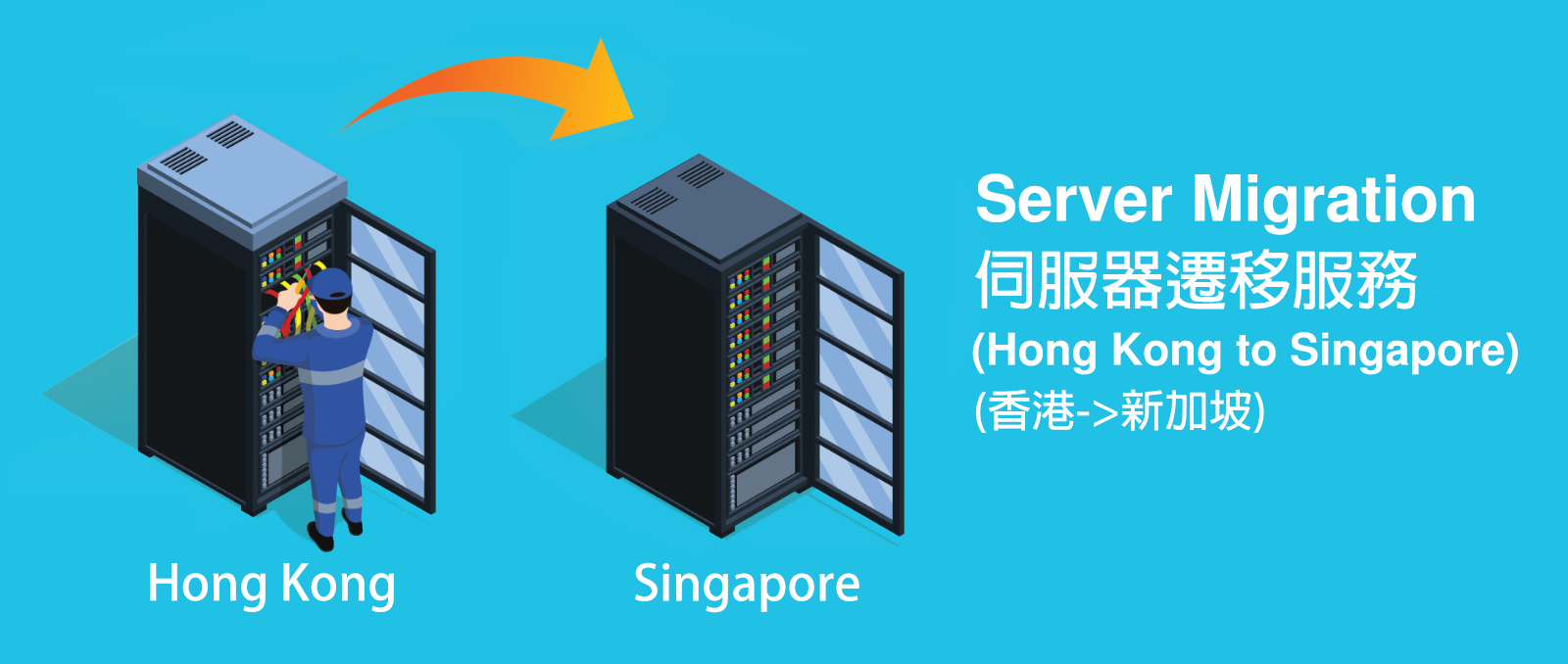|

Welcome to our professional server migration service for relocating servers to Singapore!
In today's globalized business environment, the location and performance of your servers are crucial to the success of your enterprise. Our server migration service offers you the opportunity to transfer your servers to Singapore, providing you with greater advantages and opportunities for your business.
Why choose to migrate your servers to Singapore? As a leading business and technology hub in Asia and across the globe, Singapore boasts outstanding network infrastructure and advanced technological environment. Here are several key advantages we offer:
1. Network Stability: Singapore offers highly stable and reliable internet connectivity. Its advanced infrastructure ensures excellent network performance and availability, providing seamless connections and an enhanced user experience for your business operations.
2. Low Latency: Serving as a network gateway in Asia, Singapore's proximity to major business centers worldwide enables lower latency and faster data transmission speeds. This is crucial for applications and businesses that require high network speeds and real-time data processing.
3. Security: Singapore has stringent regulations and standards in information security and data protection. When you migrate your servers to Singapore, you can have peace of mind knowing that your data will be protected with the highest level of privacy and security requirements.
4. Business Opportunities: Singapore is one of Asia's most prominent business and financial centers, offering a vibrant business environment and a world-class ecosystem for technological innovation. Placing your servers in such a favorable location can bring greater business opportunities and potential for your enterprise.
Our team possesses extensive experience and expertise to ensure a smooth and efficient migration of your servers to Singapore. We provide comprehensive support throughout the entire process, from planning and preparation to implementation and testing, ensuring a seamless transition. We tailor personalized solutions to align the server migration with your business objectives.
If you have any inquiries or require further information regarding our server migration service to Singapore, please don't hesitate to contact our team. We look forward to providing you with exceptional server migration services that will contribute to the success of your business in Singapore.

Steps to Ship the Server to Singapore
Moving your server to Singapore can bring many benefits to your business, including enhanced network performance and access to a vibrant business ecosystem in the region. To ensure a successful migration process, please follow the steps below:
-
Assess Requirements: Start by evaluating your server migration needs. Identify the specific server(s) you plan to migrate and ascertain any dependencies or potential challenges that may arise during the process.
-
Plan and Design: Develop a comprehensive migration plan and design your new server infrastructure in Singapore. Consider factors such as network connectivity, hardware requirements, and data storage options. Collaborate with your IT team or engage professional service providers to devise an efficient and scalable migration strategy.
-
Logistics Preparation: Include server logistics arrangements in your migration plan. Determine the applicable mode of transportation (e.g., air freight or sea freight) and work with logistics providers to ensure the safe delivery of the servers to Singapore. Follow relevant transportation and customs procedures and ensure the server shipment schedule aligns with your migration plan.
-
Data Backup and Transfer: Before initiating the migration, back up all critical data and ensure its integrity. Develop a data transfer plan, considering the data volume and available network bandwidth. Explore secure file transfer protocols or, for large-scale transfers, consider options for physically shipping the data.
-
Infrastructure Setup: Establish the necessary infrastructure in Singapore to accommodate your servers. This includes procuring server hardware, networking equipment, and any other required components. Ensure the infrastructure complies with local regulatory requirements and meets your performance and security needs.
-
Network Configuration: Configure the network connections in Singapore to align with your requirements. This involves setting up internet connectivity, firewalls, load balancers, and other network components to meet the needs of your server environment. Test and validate the network connections to ensure seamless communication.
-
Server Deployment: Install and configure the servers in the new Singapore infrastructure. Follow best practices for server setup, including operating system installation, application deployment, and security configurations. Consider utilizing virtualization techniques or containerization for resource efficiency.
-
Data Migration: Commence the actual data migration. Depending on your data volume and bandwidth, you can choose to transfer data over the network or opt for physical media shipment. If using network transfer, ensure stable network connections and employ encryption and secure transmission protocols to protect data. If opting for physical media, use protected shipping services.
-
Testing and Validation: Perform testing and validation within the server environment established in Singapore. Ensure the servers operate correctly, applications run smoothly, and data is accessible as expected. Conduct performance testing and monitoring to ensure the system meets the anticipated performance benchmarks.
-
Traffic Transition: Once you are confident in the proper functioning of the servers in Singapore and the data migration is complete, redirect the traffic to the new servers. Update the Domain Name System (DNS) settings to point to the new server location. Note that DNS propagation may take some time, so plan ahead and be prepared to handle any potential website or application disruptions during the transition.
-
Monitoring and Optimization: Monitor the operation of the Singapore servers regularly. Use monitoring tools to track system performance, network connectivity, and resource utilization. Optimize based on monitoring results to ensure server performance and security.
Please note that server migration involves multiple steps and related technical details, so it is advisable to collaborate with a professional IT team or service provider before the migration to ensure a smooth process and minimize any disruptions or risks.
ÔĽŅ
ÔĽŅ |


